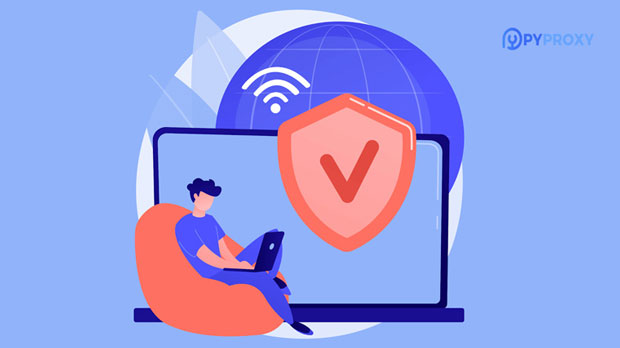In today’s fast-paced digital environment, proxy servers have become a crucial tool for enhancing online security, maintaining privacy, and ensuring anonymous browsing. Among the vast array of proxy services available, PYPROXY and HydraProxy have gained significant attention due to their promise of fast speeds and reliability. However, understanding how they stack up against each other in terms of HTTP and HTTPS proxy speeds is essential for businesses and individuals seeking optimal proxy performance. This article delves into the speed comparison of these two services, providing a detailed analysis of their capabilities, strengths, and limitations. Through this comparison, users can make an informed decision on which service best suits their needs. Introduction to Proxy Servers and Their ImportanceProxy servers act as intermediaries between users and the internet, relaying requests from users to web servers and vice versa. They are widely used for tasks such as enhancing privacy, circumventing geo-restrictions, accessing restricted content, and improving browsing speeds. When it comes to proxies, two common protocols are HTTP and HTTPS. HTTP proxies are often used for general web browsing, while HTTPS proxies provide an additional layer of encryption to secure communication between the client and server.The efficiency and speed of these proxy services are critical for users who rely on them for tasks like web scraping, gaming, online shopping, or streaming. In this article, we will compare two of the most popular proxy services in the market: PyProxy and HydraProxy, focusing specifically on their HTTP and HTTPS performance.PyProxy OverviewPyProxy is a widely recognized proxy solution known for its versatility and user-friendly features. It supports a wide range of proxy types, including HTTP, HTTPS, and SOCKS5. PyProxy is popular among businesses and developers due to its strong security features, fast connection speeds, and ease of integration into various applications.When it comes to HTTP proxies, PyProxy boasts impressive speeds, allowing users to access websites quickly without noticeable latency. This makes it suitable for activities such as web scraping, where high-speed connections are essential for large-scale data extraction. Additionally, PyProxy’s HTTPS proxy capabilities ensure that users' communications remain encrypted and secure, offering an added layer of protection during browsing sessions.HydraProxy OverviewHydraProxy, on the other hand, is a highly specialized proxy service known for its robustness and reliability. It offers both HTTP and HTTPS proxies that are optimized for speed, stability, and anonymity. HydraProxy is particularly favored by users who need to maintain consistent performance over long durations, such as those engaged in web scraping, digital marketing, or research.The HydraProxy service boasts several features that contribute to its high performance, including low-latency connections, high throughput, and advanced load balancing algorithms. The service is engineered to provide users with stable connections that minimize disruptions, even during heavy traffic periods. This makes HydraProxy a strong contender in the race for fast and reliable proxy services.Performance Comparison: HTTP Proxy SpeedWhen comparing the HTTP proxy speed of PyProxy and HydraProxy, it is essential to consider several factors that influence performance, such as latency, throughput, and overall reliability.1. Latency: PyProxy generally offers lower latency when it comes to HTTP proxy usage. The service utilizes a large network of servers located in key regions, ensuring that users can enjoy faster connections, particularly when accessing websites with high traffic. On the other hand, HydraProxy tends to have slightly higher latency, especially when users are connecting to distant servers. However, this difference in latency is typically marginal and may not be noticeable during regular browsing.2. Throughput: PyProxy excels in terms of throughput, handling a higher volume of data transfer without compromising speed. This makes it ideal for users who need to perform multiple simultaneous requests, such as web scraping or bulk data analysis. HydraProxy, while reliable, may experience a slight dip in throughput during periods of high usage, particularly when multiple users are connected to the same server.3. Reliability: In terms of reliability, both services offer stable connections, but PyProxy’s extensive server network provides it with an edge in maintaining consistent performance across various locations. HydraProxy’s focus on load balancing ensures that users experience minimal disruptions, even during peak traffic times.Performance Comparison: HTTPS Proxy SpeedHTTPS proxies are essential for secure browsing, encrypting data to protect users from cyber threats. The comparison between PyProxy and HydraProxy’s HTTPS proxy performance also involves evaluating encryption efficiency, speed, and connection stability.1. Encryption Efficiency: Both PyProxy and HydraProxy employ robust encryption protocols for HTTPS proxies. However, HydraProxy uses more advanced algorithms for secure communications, which might result in slightly slower speeds when compared to PyProxy’s implementation. This is due to the increased computational overhead associated with stronger encryption techniques. For users who prioritize security over speed, HydraProxy is an excellent choice. 2. Speed: In terms of raw speed, PyProxy tends to outperform HydraProxy in HTTPS proxy connections. While both services offer fast speeds, PyProxy is optimized to handle encrypted traffic more efficiently, leading to less overhead and quicker browsing speeds. This makes PyProxy a preferable option for users who need a balance between security and speed.3. Connection Stability: Both PyProxy and HydraProxy provide stable HTTPS connections, but HydraProxy has the upper hand in maintaining long-term stability. HydraProxy’s infrastructure is designed to handle high volumes of encrypted traffic with minimal disruptions. PyProxy, while generally stable, may experience occasional hiccups during peak usage times, especially if the connection is encrypted.Factors Affecting Proxy SpeedSeveral factors can influence the performance of both PyProxy and HydraProxy. Understanding these factors can help users optimize their proxy experience.1. Server Location: The geographical location of the proxy servers plays a significant role in speed. Both PyProxy and HydraProxy have global server networks, but the closer a user is to the server, the faster the connection will generally be. Selecting servers in nearby regions can minimize latency and improve overall speed.2. Server Load: The number of users connected to a specific server can impact performance. During peak times, server load can result in slower speeds due to congestion. HydraProxy’s load balancing system helps mitigate this issue, while PyProxy’s vast server network reduces the likelihood of experiencing high server load.3. Connection Type: The type of connection used by the user can also affect speed. Wired connections tend to be more stable and faster than wireless connections, which can suffer from signal interference and bandwidth fluctuations.Conclusion: Which Proxy is Right for You?In conclusion, both PyProxy and HydraProxy offer excellent performance in terms of speed, security, and reliability. The choice between the two services ultimately depends on the specific needs of the user.- PyProxy is ideal for users who prioritize speed and efficiency, particularly in HTTP proxy usage. Its large server network and low-latency connections make it an excellent choice for tasks like web scraping, bulk data processing, and general browsing.- HydraProxy shines in scenarios where connection stability and secure encrypted traffic are essential. Its advanced encryption techniques and load balancing make it a top choice for users who need consistent performance and robust security, especially in HTTPS proxy use.Understanding the strengths and limitations of both services allows users to select the best proxy for their unique requirements. Whether you’re looking for speed, security, or reliability, both PyProxy and HydraProxy offer solutions that can cater to your needs.
Oct 23, 2025



































































